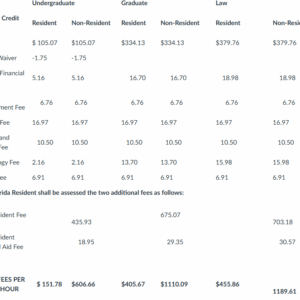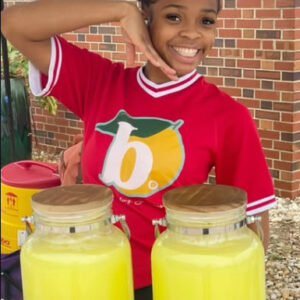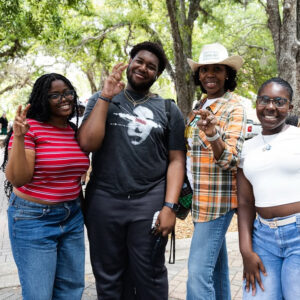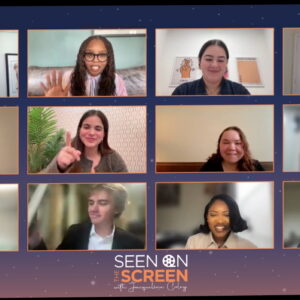Sports | April 29th, 2023
Significant Impact, Minimal Success? FAMU’s Love Affair With the NFL
By: Tatyanna McCray
If nothing else brings people together outside of holidays, football does. It’s a joyous experience for fans and players alike, relishing during times of victory and trash-talking in defeat. Sunday nights, super bowls, award shows, and player gossip are all ingredients within the pot that keeps the consumers fed and seeking more from their favorite teams and athletes.
Although many young players have a lifelong goal to make it big and reach professional stardom, the obstacles to getting there are endless for players from historically black colleges and universities.
Lack of resources, losing streaks, and undertones of low expectations are some hurdles HBCU players face over their counterparts. However, despite this, athletes are pushing to prove a point and achieve their dreams.
Playbook 101
The NFL originated in 1920 with just ten teams and was initially named the American professional football association. Due to racially motivated circumstances, black players weren’t eligible to play in the professional league or at PWIs. From 1934 to 1946, no black players were allowed to play in the NFL.
From the 1950s onward, throughout the late 1990s, players from HBCUs were picked almost religiously, with Edward Jones being a first-round pick in 1974. FAMU became one of the HBCU staples that housed football superstars such as Robert Hayes and Kenneth Riley.
Roderick Fluellen, a Winston-Salem State University alumni and former college athlete, feels, “Coming from an HBCU the players have something to prove and must play like they have a chip on their shoulder because of the stiff competition coming from other schools and other players at higher levels at institutions with more resources and opportunities.”
FAMU has a record of 66 total players drafted into the NFL. However, another FAMU player in the NFL draft has not been the choice since 2013, possibly due to competition or the disregard held towards HBCU players. FAMU is the fifth University among other HBCUs, Grambling University, Tennessee State University, Jackson State University, and Southern University A&M, with higher numbers of drafted players.
The journey to the NFL is challenging, requiring a never-ending rigorous mindset. Athletes from HBCUs have to work ten times harder to gain a piece of the attention given to athletes at PWIs. The struggle, emotional turmoil, and physical injuries are a part of the process for football players to reach the ultimate level of stardom.
According to the official ESPN NFL draft tracker, over the past 10 years, 2,558 players were drafted in the past ten years. Twenty-seven were players from HBCUs, with only one of those players being Brandon Hepburn, a former Rattler. The 2021 NFL draft sparked outrage as HBCU football players were absent during the draft.
Since the late ’90s and early 2000s, a sharp, gradual decline in the representation of HBCU players has become a trend, leaving players fighting tooth and nail for a spot in the league. College football players earned the title “All-American,” describing their athleticism and highlighting their potential for growth in the sports arena.
So, what does it take to make it into the draft and then the professional league? Many HBCU players have received numerous accolades but are always second to last when drafting season comes around.
Fumble on the Play
Aside from the lack of recognition, players must decide between dedicating extensive amounts of time to their love of football over their social life and personal relationships. As a result, it can be costly as significant milestones such as committed romantic relationships, bonds with loved ones, and personal development are left stagnant or abandoned altogether, consequently causing mental health issues.
One significant danger is that too many injuries to the head can cause chronic traumatic encephalopathy (CTE). Chronic traumatic encephalopathy (CTE) is an injury that affects the brain, creating sudden mood swings, and sparking depression, issues with suicidal thoughts, and aggression.
Physical injuries are also a driving force behind why many players are benched or quickly cut, as teams are money and success-minded and want to be able to bet on strong, enduring players. If a player is seriously injured or hurt, they risk losing endorsement deals and jersey numbers.
Contractual agreements are drawn up for players as they are chosen based on the need for their positions, and sometimes promises are made and not fulfilled. Another issue that plagues fresh faces in the major league is poor money management. It is a repetitive cycle for players to mishandle their money or be taken advantage of by agents and those around them.
“You can’t feel like you owe everybody something, learn discernment between those that are for you, and those that don’t mean you well,” said former FSU strong safety Phillip Simpson. “Stay true to yourself, and be sure to keep up with your expectations of what is expected of you, follow instructions.”
Moreover, once the process begins, the player accumulates large amounts of debt, and living just above the poverty line becomes a familiar reality. It is not uncommon for many players to have similar upbringings of being raised in a single-parent household or their families struggling to sustain basic needs. Financial literacy is not a natural-born skill for many it is a routine that must be learned and maintained.
Players have recently started demanding most of their salary upfront to prevent discrepancies. Also, although the NFL is technically a paid job with several perks and benefits, some clauses could affect players well after they’ve retired from the game. For instance, a player is only eligible for a pension after they retire if they play for three seasons.
Let the Games Begin
In addition, some of the most sought-after and highly rated players perform to showcase their skills at various exhibitions testing their physical and mental strengths while also evaluating them medically. Among the different events held, the combine is held yearly and, along with Proday, is widely popular as they’re both up close, personal, and intimate with the players.
Former San Franciso 49ers player Colin Kaepernick sparked debate when he compared the NFL combine to the auction block during slavery. Team scouts grade players on various things, including their physical stock, intelligence, and ability to follow instructions. Players are ranked by score and measured as investments for the 32 NFL teams seeking captivating talent to emphasize the importance of what’s at stake.
On average, players play from three to four years in the NFL; prior players played over five seasons, some ranging from ten to fifteen seasons. The NFL abbreviation has received the nickname moniker “not for long” as the NFL takes its toll on the body. Thus, supporting the argument that it is pivotal that college athletes earn their degrees in an area of their interest for a precautionary backup plan. There’s nothing worse than a wasted scholarship or working in a career field that doesn’t fuel your inner passion.
The more you know:
- There are three college football divisions: division I, II, and III
- The official number of draft rounds was set to seven in 1994 after being reduced from eight. Before then, the rounds ranged from 17 to 12
- “Mr. Irrelevant,” coined in 1976, describes the last draftee pick of the rounds… Talk about a hit to the ego
- There are a total of 24 different football positions, separated into two categories, defense, and offense
- Although the NFL is currently the most popular, there are several other football leagues, including XFL, and USFL
- The most highly regarded round picks are 1st and 2nd rounds, as they have secured a definite spot on the team, while rounds 3-7 are typically backup players or a part of the workout or practice squads
Touchdown?
This year FAMUs athletic department hosted pro day on campus, with over 20 scouts present to study seven Rattlers with hopes of being drafted. This year’s draft is on schedule to be held in true fashion over the course of three days, from April 27th- April 29th. Among the seven players from FAMU are hundreds, if not thousands, of other draft-eligible athletes hungry and eager to receive great news and phone calls from teams, agents, and NFL representatives.
So, what will it be? Will Rattlers prevail and break a long drought by having their wishes fulfilled? Or will this year go down as yet another recorded scenario of HBCU players having their hopes and dreams crushed?





